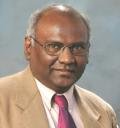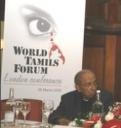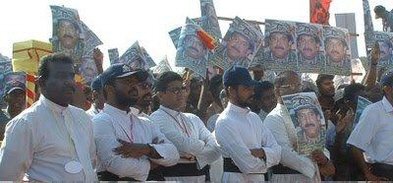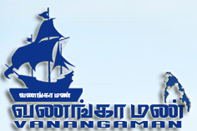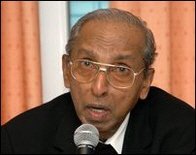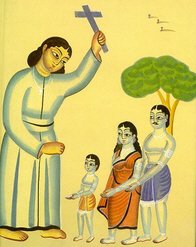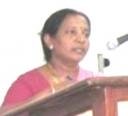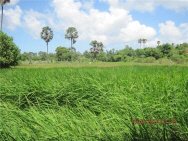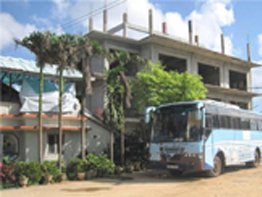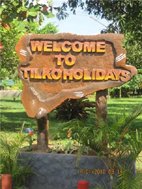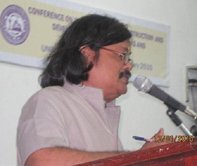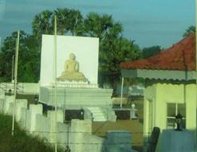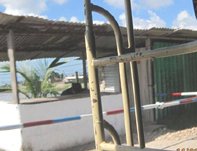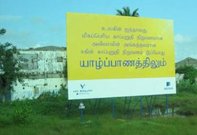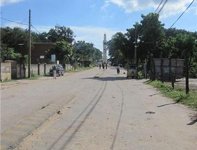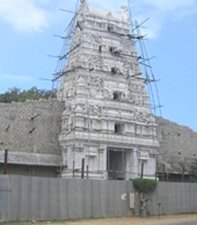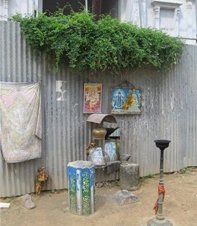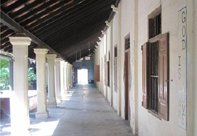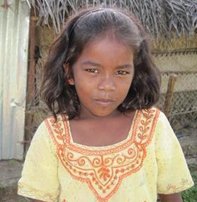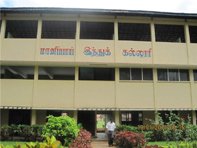 Conference on Rehabilitation, Reconstruction & Development of the Tamil Areas and the Role of Diaspora By Tarrin Constantine
Conference on Rehabilitation, Reconstruction & Development of the Tamil Areas and the Role of Diaspora By Tarrin Constantine
Venue: Jaffna University Library Auditorium Tuesday, 12th January 2010
Objective – Future of Tourism & Hospitality Industry in North & East of Sri Lanka
The objective of this paper is to explore the future of tourism industry in Sri Lanka with particular focus on how to reactivate it in the North & East of the country. Any master plan for development of tourism for each of the provinces in Sri Lanka should be worked out within the wider framework of the tourism network of the country. For example, Jaffna alone cannot be the desired destination of a tourism development programme; instead it should fit within the market strategy of the tourist industry as a whole or for that matter The Sri Lanka Tourism Development Authority and The Sri Lanka Tourism Promotions Bureau (successors to The Sri Lanka Tourist Board)
Organised tourism was institutionalised in Sri Lanka in 1966 and since then it has seen a rapid growth. This growth is in spite of 40 years of violence and communal unrest in the country, at certain time reaching its peak level. Further, the industry has gonethrough a setback in the aftermath of the Tsunami (2004) in the year 2005; however it got recouped within a short span of time. The year 2004 has witnessed the highest tourist arrivals of 566,202 and contributing USD 416 million to the economy. At that time the industry had direct and indirect employment of 112,000 people. In the years 2007 and 2008 there has been a sharp decline in arrival of 494,008 and 438,475 respectively. The decline is mainly due to the internal war in the country and the Global economic slump. Total arrivals of the year 2009 are expected to be around 439,000.
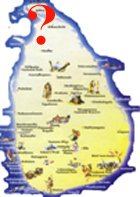 Year – Tourist arrivals
Year – Tourist arrivals
1995 – 403,101
1996 – 302,265
1997 – 366,165
1998 – 381,063
1999 – 436,440
2000 – 400,414
2001 – 336,440
2002 – 393,171
2003 – 500,642
2004 – 566,202
2005 – 549,308
2006 – 559,603
2007 – 494,008
2008 – 438,475
2009 – (Dec estimated ) 439,000
However, as would be evident from the above Table, the decline of 11.2% in tourist arrival during 2008/ 2009 in spite of Global economic downtrend and the country in a war footing is a positive sign.
On the basis of research carried out by the Sri Lanka Tourism Promotions Bureau and the World Tourism Organisation (WTO), it is very clear that Sri Lanka has a long way to go to tap its full potential. Therefore it is vital that politicians and academics from the North East area should give the utmost priority in developing the area into a desired destination for tourists.
What we have to offer
Sri Lanka, apart from being gifted with diversity of attraction which only a few countries could match with its uniqueness, is one of the very few which can fit in the ‘attraction diversity criterion’ with 65,525 sq km.
With regards to North and East it should specifically initiate some programmes to attract the tourists. For instance, vast areas of desert in major countries were turned in desired destinations for tourists (e.g.: Tunisia, Egypt). Tourists travel hundred of miles to arrive at some destinations. I do not have much knowledge about the Eastern province, hence explored some concepts for the other provinces. When a concept is developed it is always better to schedule during holidays and other major events of the country such as:
• Nallur Temple festival
• Establishing shop points for day tour operators (Keerimalai, Jaffna town, Nallur Temple etc)
• Thellippalai Thukai Amman festival
• Tamil New Year
It is also important to take into consideration that any tourism and hospitality industry will not succeed without well trained and motivated staff in the industry. Provincial bodies should encourage private investment to open hotels in Northern and Eastern provinces. Government help can also be sought to start tourist related courses in these provinces. Sri Lanka Institute of Tourism & Hotel Management can venture into such activities.
Small provinces like Jaffna and Batticaloa will have two kind of visiting:
• Day visits
• Long time visits
Market should be developed to capture both kinds of customers.
In the South, Esala Perahara, Navam Perahara, Kelenyia Duruthu Perehara, Singhala New Year, Vesak Poya Celebration and Sri Pada Pilgrimage are some cultural activities that attract tourists and promotions in that respect is carried out Worldwide. It is important that we identify such events and carryout promotion in order to attract tourist. It will also help us to preserve our cultural identity. It will also project as a show case for our cultural enhancement.
Currently Sri Lankan visitors stay is as follows:
Period of stay – 2008
Period 2008
1-3 nights 26.4%
4-7 nights 28.7%
8-14 nights 33.2%
15-21 nights 8.7%
22-30 nights 1.8%
31 nights & over 1.2%
For example we cannot expect the pleasure tourists to stay in Jaffna over 7 days. Therefore 4-7 night guests are a vital market. Therefore stay plan should be developed keeping this duration of stay in mind.
Market Segment- Where we stand
The following are the top ten countries generating markets in this sector for Sri Lanka. As would be seen from the Table, India has overtaken UK as the major market for Sri Lanka over the past 3/ 4 years.
Top ten market- 2008 (Pleasure Tourist 73.2%)
Rank Country Tourists
1 India 85,238
2 UK 81,331
3 Germany 31,564
4 Maldives 30,625
5 Australia 19,536
6 Netherlands 15,797
7 USA 14,053
8 Japan 13,030
9 Russia 10,594
10 China 10,258
North and East have a unique advantage of attracting Diaspora community, as their desired tourist destination. This can be an easy market if it could be tapped. It is important that any marketing has to be completely out of any political or any other influence.
Provincial councils in North and East should have strong representation in The Sri Lanka Tourism Development Authority (SLTDA) and The Sri Lanka Tourism Promotions Bureau (SLTPB) representing the interest of North & East. It should ensure that North & East have appropriate representation in SLTPB and in its overall marketing plan.
At present North and East have no representation at all and it is completely understandable. However, future should be different.
Institutional Structure
History of SLTDA
In 1966, the Government decided to develop tourism in a planned and a systematic manner, after identifying the need to set up an institutional framework. The Ceylon Tourist Board (created by the Ceylon Tourist Board Act No 10 of 1966) and the Ceylon Hotels Corporation (created by Ceylon Hotels Corporation Act of 1966) were set up duly.
Created to promote rapid economic development, through the development of foreign tourism, the Ceylon Tourist Board (CTB) was a statutory body that allowed greater freedom in decision making and flexibility in financial management.
The Ceylon Hotels Corporation was a Joint Stock Company with public and private sector involvement. It was intended to be the commercial arm of the Government for the purpose of developing accommodation and other facilities for tourists.
The Tourist Development Act, enacted in 1968, allowed the Ceylon Tourist Board to obtain prime land and private land (through compensation) for development purposes. Lending institutions advancing money for tourist development and construction programmes were given guarantees for securing their credits. The legislation also covered the establishment of a national holiday resort company, which planned various types of accommodation and resort areas. Moreover it included the setting up of an authority under the Tourist Board to mange and administer each resort. The Act conferred powers for the Protection of Highways and Places of Scenic Beauty and vested authority in the Ceylon Tourist Board for the Registration and Classification of Tourist Hotels and all other tourist services including travel agencies. The Tourist Development Act of 1968 provided the Ceylon Tourist Board with the statutory authority to develop tourism on a planned and controlled basis.
With the new Tourism Act number 38 of 2005. which came into effect from the 1st October 2007 the following bodies became as successors to the Sri Lanka Tourist Board.
1. The Sri Lanka Tourism Development Authority
2. The Sri Lanka Tourism Promotions Bureau
3. Sri Lanka Institute of Tourism & Hotel Management
4. Sri Lanka Convention Bureau
Within these structures The Sri Lanka Tourism Development Authority (SLTDA) is the most operational aspect. Within SLTDA there are important projects where North and Eastern provinces should actively participate. These projects are as follows:
• Tourism Infrastructure projects
• New Product Development
• Domestic Tourism Projects
• Destination Management System
• Sustainable Tourism Developing project
• Regional Tourism project
It is important that provincial administrators and politicians are getting involved to make sure that the North and East interests are well represented by experienced and capable professionals.
Infrastructure
Tourism requires a good infrastructure. There are so many examples in the world where countries are suffering without proper infrastructure to attract the tourists. When the destination becomes popular more people want to visit the country. In return demand for travel will increase resulting in higher airfare. Then this will resent in catch 22 situations, whereby visitors demand increases and the flights decline. This is more common in small islands (e.g: Cyprus, Sri Lanka). Currently 99.9% of the people visiting Sri Lanka get into the country by air travel. SLTDA has set a target of reaching 2.5 Million tourists by the year 2016. This is 8.6 times over the current capacity. On the other hand environmental policies are getting stretched day by day resulting in more restriction on air travel. Therefore Sri Lankan target of 2.5 Million will become impossible as days go by. In such a situation, sea points have to be open up to meet such targets.
With India in the top of the market for tourists in Sri Lanka, the possibility of opening sea points- in the North and East will be one option for consideration. Therefore it is important that Tamil areas should take the full advantage of this new trend
Balancing the Market Economy & Social/ Cultural Framework
It is very important to make a balance of market economy with the social and the cultural environment of the region. Market should not be allowed to dictate the inhabitants of the land. There are many countries in the world where tourists exploit the natives beyond anyone could imagine. It is all covered up by the instructions in order to maintain the reputation of the country. Tourism is the industry that offers service. In many countries the concept of service is extended to child sex, prostitution, drugs and other inhuman activities.
Sri Lanka is not an exception. In Sri Lanka an estimated 36,000 children are believed to be victims of prostitution, according to a study by UNICEF in 1998. An NGO, PEACE operating in Sri Lanka, estimates that 10,000 children, especially boys, may be involved in child sex tourism. Sri Lanka has a number of laws on child protection and the prevention of child abuse, including having ratified the United Nations Convention on the Rights of the Child (CRC) in 1991. In 2002, the Optional Protocol to the CRC on the Sale of Children, Child Prostitution and Child Pornography was signed and the ILO Convention 182 on the Worst Forms of Child Labour ratified. Economical reality and day to day hardship had overtaken the implementation of it in the land. Therefore it is important that tourists and hospitality industry should grow under closer cooperation and network with several organisations. Tourism industry dictated by market will distract the community.
Conclusion
The future economy of Sri Lanka is dependent on tourism for many resources unique to Sri Lanka. Potentials still remain to be explored. Reconstructing Tourism industry would be crucial to uplift the Sri Lankan economy. As the Sri Lanka government seeks foreign investment, foreign entrepreneurs should invest in major projects including tourist industry.
Sri Lanka has named 2011 as “Visit Sri Lanka Year” by doubling the number of foreign tourists to one million. President Mahinda Rajapaksa has given his personal utmost to this project. Therefore it is vital that government takes into full advantage the potential of tourist industry in Sri Lanka, formulate and implement a comprehensive and coordinated programme which will be resistant to all political stereotypes and enhance the life of natives.
(Extacts from paper submitted by Mr Tarrin Fellow Member of British Association 0f Hospitality Accountants & Member of Institute of Hospitality. Currently working as the Group Financial Director of Desilu Group (owners & operators of Hotels & Properties) based in United Kingdom and Cyprus,)
Courtesy: www.dailymirror.lk/print/index.php/opinion1/3405
 டென்மார்க்கை தளமாகக் கொண்டு இயங்கும் குளோபல் மெடிக்கல் எய்ட் உடனான சந்திப்புக்கு கிழக்கு மாகாண முதலமைச்சர் சந்த்திரகாந்தன் மற்றும் அவருடைய செயலாளர் அசாட் மெளலானா ஆகியோர் வந்திருந்தனர். எதியோப்பியாவில் இடம்பெற்ற மாநாட்டுக்குச் சென்றிருந்த முதலமைச்சர் சந்திரகாந்தன் ஐரோப்பிய பயணத்தையும் மேற்கொண்டு இருந்தமை குறிப்பிடத்தக்கது. முதலமைச்சர் சந்திரகாந்தன் டென்மார்க் பயணத்தை முடித்துக் கொண்டு இன்று (Dec 23, 2010) ஹோபன்ஹேகனில் இருந்து புறப்பட்டார்.
டென்மார்க்கை தளமாகக் கொண்டு இயங்கும் குளோபல் மெடிக்கல் எய்ட் உடனான சந்திப்புக்கு கிழக்கு மாகாண முதலமைச்சர் சந்த்திரகாந்தன் மற்றும் அவருடைய செயலாளர் அசாட் மெளலானா ஆகியோர் வந்திருந்தனர். எதியோப்பியாவில் இடம்பெற்ற மாநாட்டுக்குச் சென்றிருந்த முதலமைச்சர் சந்திரகாந்தன் ஐரோப்பிய பயணத்தையும் மேற்கொண்டு இருந்தமை குறிப்பிடத்தக்கது. முதலமைச்சர் சந்திரகாந்தன் டென்மார்க் பயணத்தை முடித்துக் கொண்டு இன்று (Dec 23, 2010) ஹோபன்ஹேகனில் இருந்து புறப்பட்டார். இந்த மருந்துப் பொருட்களை இலங்கையில் பொறுப்பேற்று கிழக்கு மாகாணத்தில் விநியோகத்தை மேற்கொள்வது தொடர்பான உடன்பாட்டை மேற்கொள்ளவே முதலமைச்சர் சந்திரகாந்தனும் அவரது செயலாளரும் டிசம்பர் 22ந் திகதி டென்மார்க் வந்திருந்தனர். மேற்படி விடயங்களை நிறைவுசெய்த பின்னர் அவரது டென்மார்க்கிலுள்ள ஆதரவாளர்களை சந்தித்த அமைச்சர் கிழக்கு மாகாணத்தின் சம கால அரசியல்நிலை தொடர்பாகவும், கிழக்கு மாகாணத்தின் அபிவிருத்தி தொடர்பிலும் அவர்களினது ஆலோசனைகளையும் பெற்றுக்கொண்டு தங்கள் பயணத்தை முடித்துக் கொண்டு சுவிஸ் புறப்பட்டு சென்றனர்.
இந்த மருந்துப் பொருட்களை இலங்கையில் பொறுப்பேற்று கிழக்கு மாகாணத்தில் விநியோகத்தை மேற்கொள்வது தொடர்பான உடன்பாட்டை மேற்கொள்ளவே முதலமைச்சர் சந்திரகாந்தனும் அவரது செயலாளரும் டிசம்பர் 22ந் திகதி டென்மார்க் வந்திருந்தனர். மேற்படி விடயங்களை நிறைவுசெய்த பின்னர் அவரது டென்மார்க்கிலுள்ள ஆதரவாளர்களை சந்தித்த அமைச்சர் கிழக்கு மாகாணத்தின் சம கால அரசியல்நிலை தொடர்பாகவும், கிழக்கு மாகாணத்தின் அபிவிருத்தி தொடர்பிலும் அவர்களினது ஆலோசனைகளையும் பெற்றுக்கொண்டு தங்கள் பயணத்தை முடித்துக் கொண்டு சுவிஸ் புறப்பட்டு சென்றனர்.
